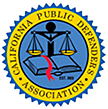A Gun Violence Restraining Order (GVRO)/The Red Flag Law is a legal mechanism designed to prevent potential harm by temporarily restricting an individual's access to firearms. The legal process can be challenging for individuals facing the prospect of a GVRO, with consequences far beyond the immediate situation.
This article will explain all you need to know about California's Red Flag Law. We will focus on unraveling the specifics: What triggers the issuance of a GVRO? How does one respond effectively? And, perhaps most significantly, how can a criminal defense attorney help you safeguard your rights?
What is the Red Flag Law?
The Red Flag Law, officially known as the Gun Violence Restraining Order (GVRO) in California, is a legal mechanism designed to address potential threats posed by individuals who may be at risk of harming themselves or others with firearms. Enacted in response to concerns about gun violence and mass shootings, this law allows concerned family members, household members, and law enforcement to petition the court for a temporary restriction on an individual's access to firearms.
The Red Flag Law is intended to strike a balance between public safety and individual rights, allowing for the temporary removal of firearms when there is credible evidence of a potential threat. It underscores the importance of early intervention and the role of legal processes in mitigating the risks associated with gun violence.
Is the Red Flag Law Constitutional?
The Red Flag Law is constitutional in California, though this has been a subject of legal debate. Proponents argue that Red Flag Laws are constitutional as they provide a legal process to temporarily restrict an individual's access to firearms based on evidence of a credible and imminent threat. They often emphasize the potential benefits for public safety and preventing harm.
However, opponents raise constitutional concerns, primarily centered around the Second Amendment of the United States Constitution, which protects the right to keep and bear arms. Critics argue that Red Flag Laws may infringe upon this constitutional right by allowing for the removal of firearms without the traditional due process afforded in criminal cases.
Legal challenges to Red Flag Laws have occurred in various other states, such as Florida, and court decisions have varied. Some courts have upheld the constitutionality of these laws, while others have raised concerns about due process and the potential for abuse.
Criteria for Issuing a GVRO
The criteria for issuing a Gun Violence Restraining Order (GVRO) in California are generally based on evidence that the subject poses a significant risk of harm to themselves or others by possessing firearms. The process involves careful consideration of various factors, and the specific criteria include the following:
- Substantial and credible threat — The petitioner, typically a family member, household member, or law enforcement officer, must present clear and convincing evidence to the court that the subject poses a substantial and credible threat of violence.
- Evidence of risk factors — The court considers various risk factors, including but not limited to recent threats or acts of violence towards oneself or others, evidence of a serious mental health condition or crisis, reckless use, display, or brandishing of firearms, violent behavior, or acts of cruelty to animals.
- Specificity of threat — The petition must provide specific details about the threat, explaining why the subject's access to firearms poses a danger. Vague or generalized concerns may not meet the legal threshold for a GVRO.
- Temporal relevance — The evidence presented should demonstrate that the risk is imminent or has recently occurred. Past behavior, while relevant, may not be sufficient if there is no ongoing or imminent threat.
- Relationship to firearms — The court considers the individual's relationship to firearms, assessing whether they own, possess, or have easy access to firearms. This evaluation helps determine the extent of the risk posed by the individual's access to weapons.
Who Can Petition for a GVRO?
In California, several categories of individuals are authorized to petition for a Gun Violence Restraining Order (GVRO). The following parties are generally eligible to file a petition for a GVRO:
- Law enforcement officers — Police officers and other law enforcement officials are empowered to initiate the process and petition the court for a GVRO if they have credible evidence that an individual poses a significant risk of harm.
- Family members — Family members, including spouses, parents, children, siblings, grandparents, and those related by blood or marriage, can file a petition for a GVRO. This category is broad to encompass various familial relationships.
- Household members — Individuals who share a residence with the person subject to the GVRO can also file a petition. This extends beyond traditional family relationships to include individuals who live under the same roof.
- Employers — Employers may petition for a GVRO if the subject of the order is an employee and the employer has substantial evidence that the individual poses a significant risk of harm.
Note that the eligibility to file a GVRO is not universal, and specific relationships or connections to the individual in question are required. The petitioner must have firsthand knowledge of the subject's behavior or circumstances that warrant the issuance of a GVRO.
Additionally, individuals filing a petition are generally required to provide specific and credible evidence supporting their request. Based on the presented information, the court will evaluate the evidence and determine whether a GVRO is warranted.
Emergency vs. Non-emergency GVROs
In California, Gun Violence Restraining Orders (GVROs) can be classified into two main types: emergency GVROs and non-emergency GVROs. The classification is based on the situation's urgency and perceived risk level.
Emergency GVROs are typically initiated in urgent situations with an imminent risk of harm. Law enforcement officers can request an emergency GVRO without prior notice to the individual subject to the order.
The court may issue an emergency GVRO without a full hearing or notice to the subject. This is known as an ex parte hearing, where the requesting party presents evidence to the court without the other party being present.
Emergency GVROs are usually temporary and can be in effect for up to 21 days. A follow-up hearing is normally scheduled within 21 days to determine whether a longer-term GVRO is warranted. At this hearing, the subject has an opportunity to contest the order.
On the other hand, non-emergency GVROs are initiated in situations where there is still a perceived risk, but the urgency is not immediate. Family members, household members, and law enforcement officers can file a petition for a non-emergency GVRO. This process involves providing notice to the subject and scheduling a full hearing.
A full hearing allows both parties to present evidence and argue their case. The court then decides whether to issue a GVRO and its duration.
A non-emergency GVRO can be in effect for up to one year if granted. Moreover, non-emergency GVROs can be renewed if evidence supports continued restrictions.
The situation's urgency and perceived risk level often dictate whether an emergency or non-emergency GVRO is pursued. Emergency GVROs allow for immediate action without prior notice, while non-emergency GVROs involve notifying the subject and providing an opportunity to contest the order at a full hearing.
How to Respond to a GVRO
Responding to a Gun Violence Restraining Order (GVRO) in California is a crucial and time-sensitive process. If you have received notice of a GVRO, here are the general steps to consider:
- Seek legal representation — Time is of the essence in responding to a GVRO. Seek legal representation as soon as possible to understand your rights and options. Experienced criminal defense attorneys can provide guidance tailored to your situation.
- Gather evidence — Collect evidence that refutes the claims made in the GVRO. This may include witness statements, mental health evaluations, or any other evidence that demonstrates you do not pose a significant risk. If relevant, document any changes in behavior, circumstances, or treatment that mitigate the perceived risk.
- Prepare for the hearing — Your attorney will guide you on the legal process, including the timeline for hearings and the specific details of the allegations against you.
- Participate in the hearing — Attend the scheduled hearing and present your case. This is an opportunity to contest the GVRO and provide evidence supporting your position. If applicable, be prepared to question the individuals who petitioned for the GVRO and present your evidence.
- Comply with court orders — Adhere to any court orders issued during the process. Failure to comply can have legal consequences.
- Maintain communication — Stay in communication with your attorney to ensure you are informed about the proceedings and any developments.
- Appeal if necessary — If the court issues a GVRO against you, understand your options for appeal. Consult with your attorney to determine the most appropriate course of action.
If mental health or behavioral concerns were raised in the GVRO, consider seeking professional help to address any underlying issues. Your attorney will help you understand the potential legal consequences of a GVRO and work with you to mitigate any long-term impact on your rights.
Remember that the specifics of responding to a GVRO can vary based on individual circumstances and the details of the case. Consultation with a legal professional is crucial to navigate the complexities of the legal process effectively.
Common Challenges Faced by Individuals Subject to GVROs
Facing a Gun Violence Restraining Order (GVRO) in California can present individuals with a range of challenges. While each case is unique, some common challenges arise for those subject to GVROs.
Here are some typical challenges:
- Limited time to respond — Individuals subject to a GVRO often have limited time to respond, especially in emergency situations. This can make it challenging to gather evidence and prepare a robust defense.
- Lack of due process — Emergency GVROs may be issued without the subject being present during the initial court hearing (ex parte). This limited due process can be perceived as a challenge to the individual's rights.
- Stigma and reputation damage — GVRO proceedings can become public, potentially leading to damage to the individual's reputation, even if the order is later lifted.
- Misunderstandings or false accusations — GVROs can be initiated based on subjective perceptions of a threat, which may not always align with the individual's actual intentions or behavior.
- Financial and professional consequences — GVROs may affect an individual's employment, especially if it involves a security-sensitive position or if the nature of the order becomes known to employers.
- Complex legal process — Navigating the legal process, understanding court procedures, and presenting a compelling case can be challenging, particularly for those without legal representation.
- Emotional toll — The process of facing a GVRO, especially when it involves contested hearings, can be emotionally distressing for the individuals involved.
- The burden of proof — The burden of proving that the subject does not pose a risk often falls on the individual facing the GVRO, which can be challenging given the subjective nature of risk assessments.
- Impact on firearm ownership rights — Even if the GVRO is temporary, the individual may lose their firearms during this period, impacting their rights and activities such as hunting or sport shooting.
- Potential for misuse — There is a potential for the GVRO process to be misused, whether through false accusations or as a means of retaliation.
Addressing these challenges requires a thorough understanding of California's GVRO laws, careful legal strategy, and, in many cases, the guidance of an experienced criminal defense attorney. Legal professionals can help individuals navigate the complexities of the GVRO process and work toward minimizing its impact on their lives.
Find a Los Angeles Criminal Defense Attorney Near Me
For those navigating a GVRO, the importance of seeking legal counsel cannot be overstated. The challenges, from limited response time to potential reputational damage, demand a strategic approach that only an experienced criminal defense attorney can provide.
At the Law Office of Sara L. Caplan, we stand ready to be your advocates in the face of GVROs. Our seasoned attorneys bring a wealth of experience in California's firearm laws and GVRO proceedings in Los Angeles, ensuring you are not alone in this challenging journey. Call us at 310-550-5877 for a free consultation and legal advice tailored to your specific situation.







